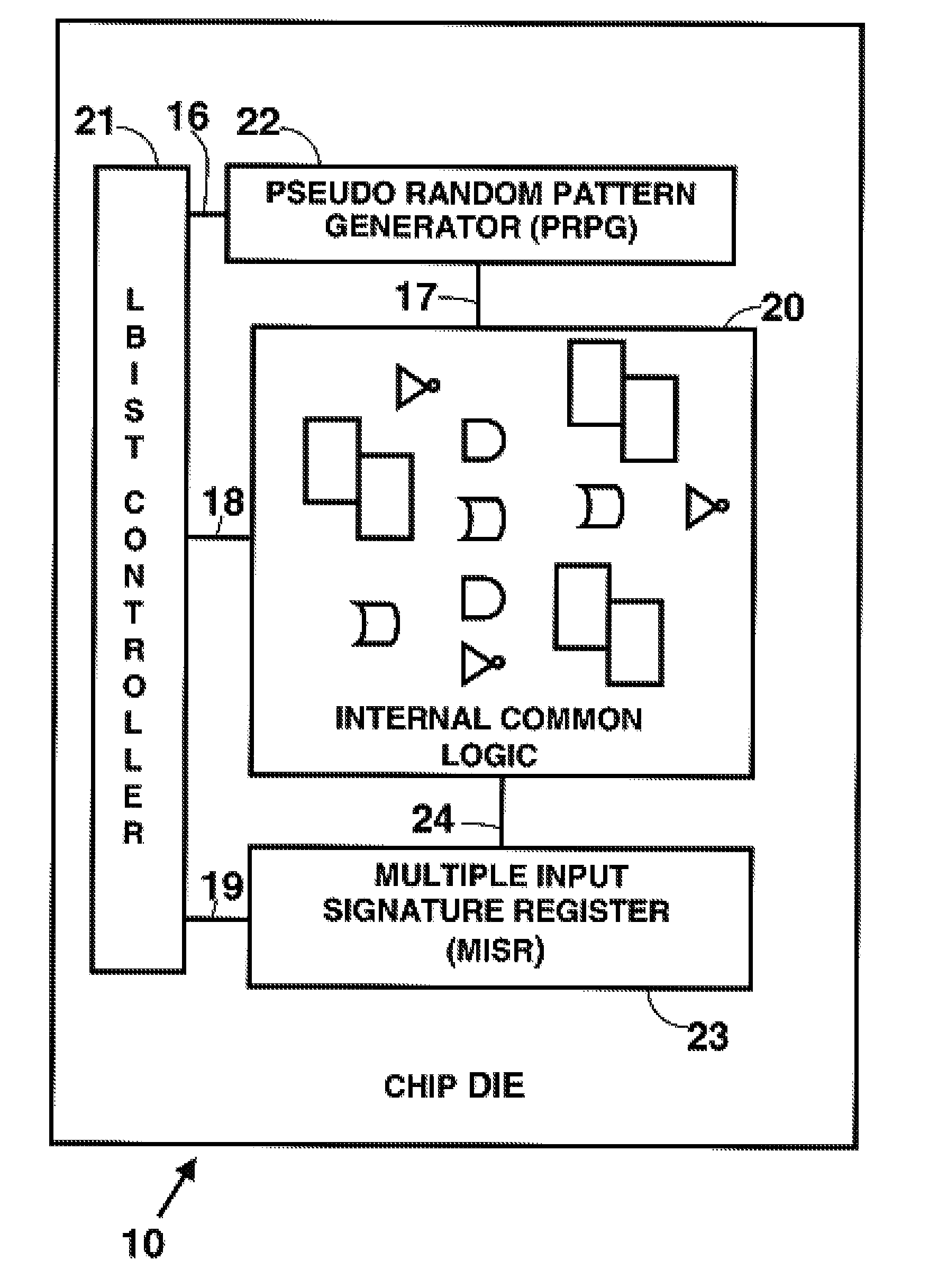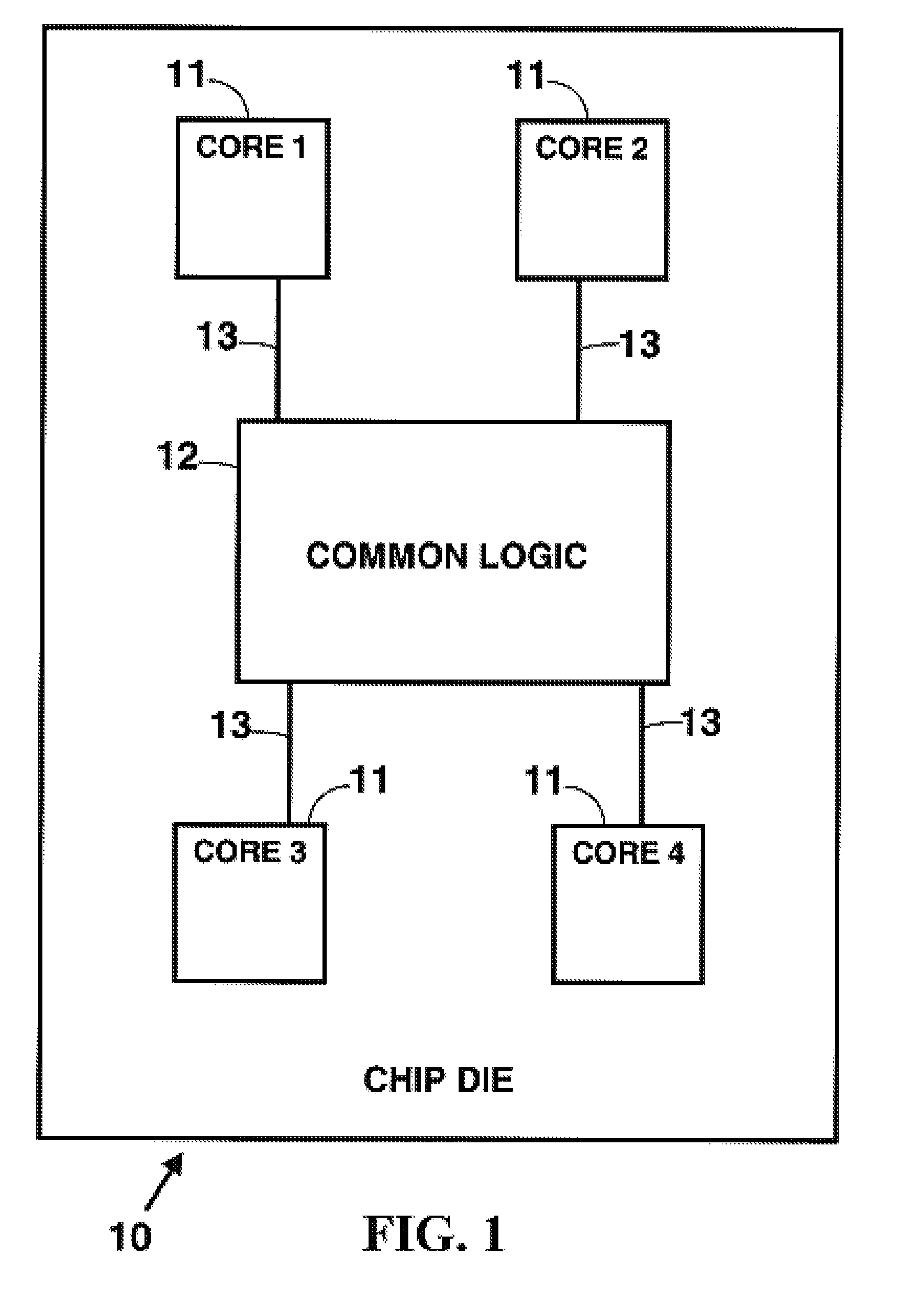Method and System for Formal Verification of Partial Good Self Test Fencing Structures
a self-testing and fencing technology, applied in the field of formal verification of partial good self-testing fencing structures, can solve the problems of time-consuming for verification engineers to get running, and achieve the effect of reducing chip test coverag
- Summary
- Abstract
- Description
- Claims
- Application Information
AI Technical Summary
Benefits of technology
Problems solved by technology
Method used
Image
Examples
Embodiment Construction
[0040]Turning now to the drawings in greater detail, FIG. 1 depicts an example of the preferred embodiment wherein a chip die 10 is comprised of a plurality of processors, commonly referred to as cores 11, and a common logic block 12. In the preferred embodiment, the cores 11 are independent units which process streams of executable code. Each core is a replicated instance of a master design component, and although FIG. 1 shows four cores on chip die 10, one skilled in the art can appreciate how this number can vary upwards from two depending on the size of the chip die 10 and the density of the fabrication technology.
[0041]FIG. 1 shows each core 11 communicating with the common logic block 12 via interfaces 13, in an arrangement sometimes known as the nest, memory subsystem, or storage hierarchy. This logic comprises elements shared by the cores 11 such as cache, embedded dynamic random access memory (eDRAM), I / O interfaces, discrete memory interfaces, firmware portals, interrupt a...
PUM
 Login to View More
Login to View More Abstract
Description
Claims
Application Information
 Login to View More
Login to View More - R&D
- Intellectual Property
- Life Sciences
- Materials
- Tech Scout
- Unparalleled Data Quality
- Higher Quality Content
- 60% Fewer Hallucinations
Browse by: Latest US Patents, China's latest patents, Technical Efficacy Thesaurus, Application Domain, Technology Topic, Popular Technical Reports.
© 2025 PatSnap. All rights reserved.Legal|Privacy policy|Modern Slavery Act Transparency Statement|Sitemap|About US| Contact US: help@patsnap.com



